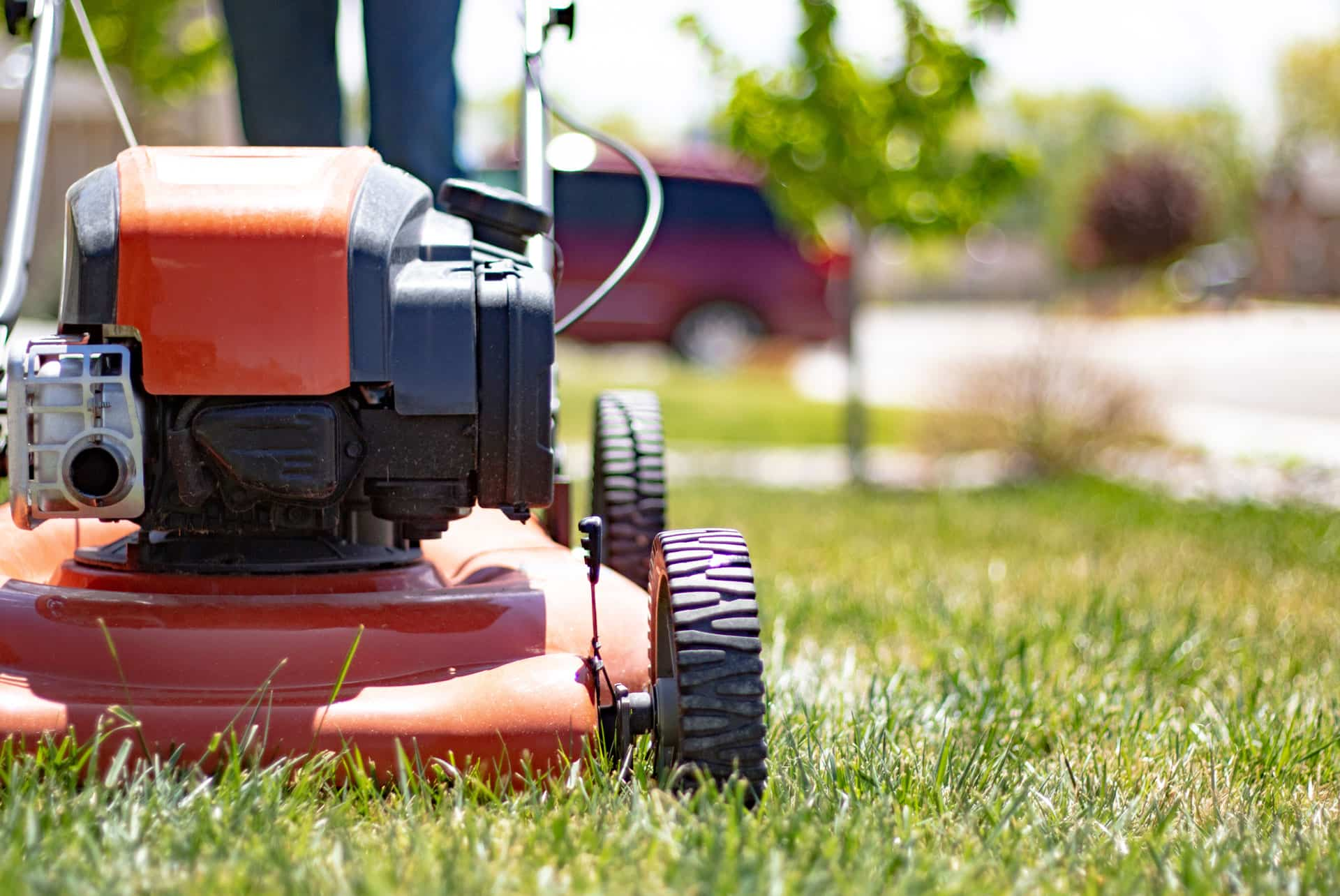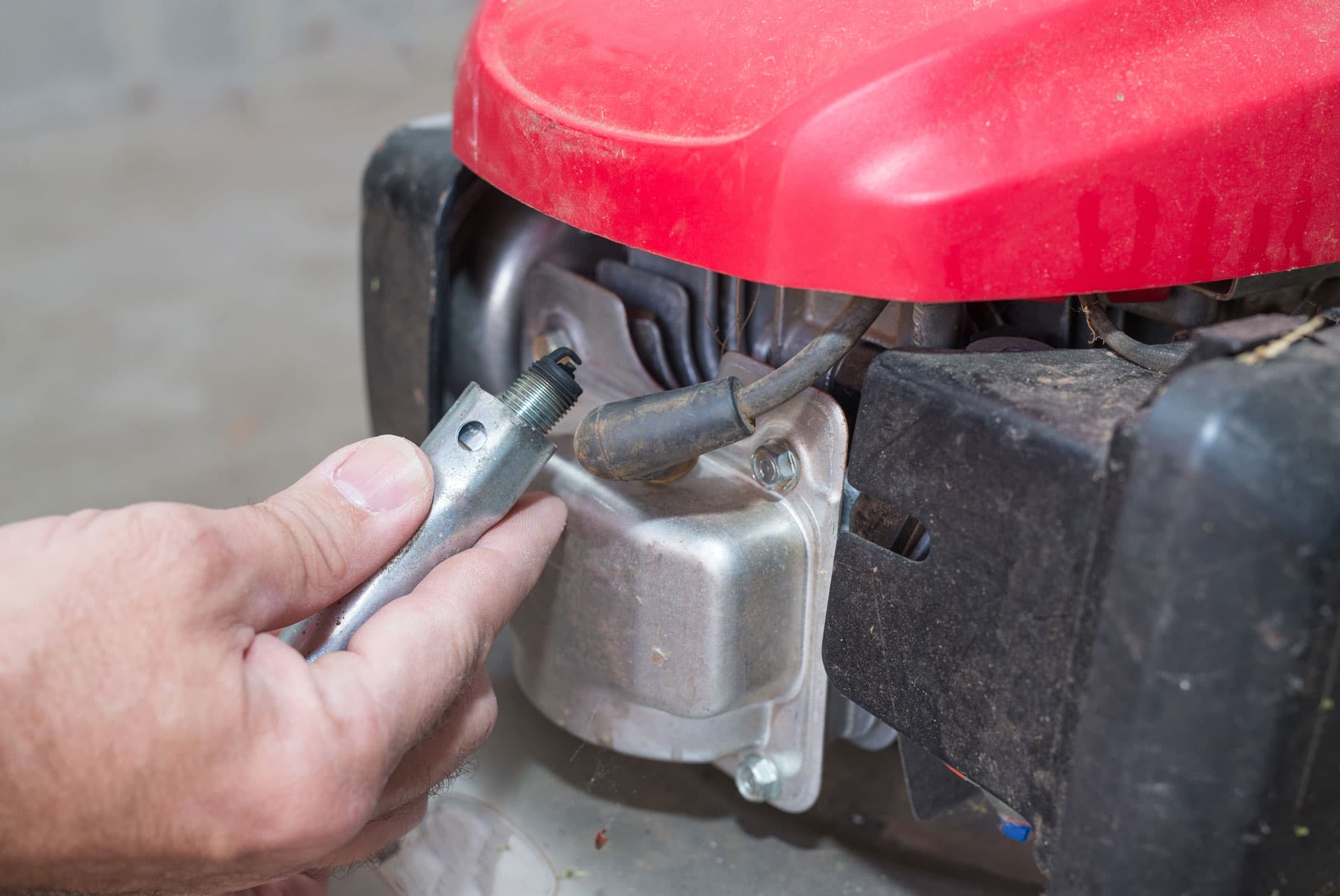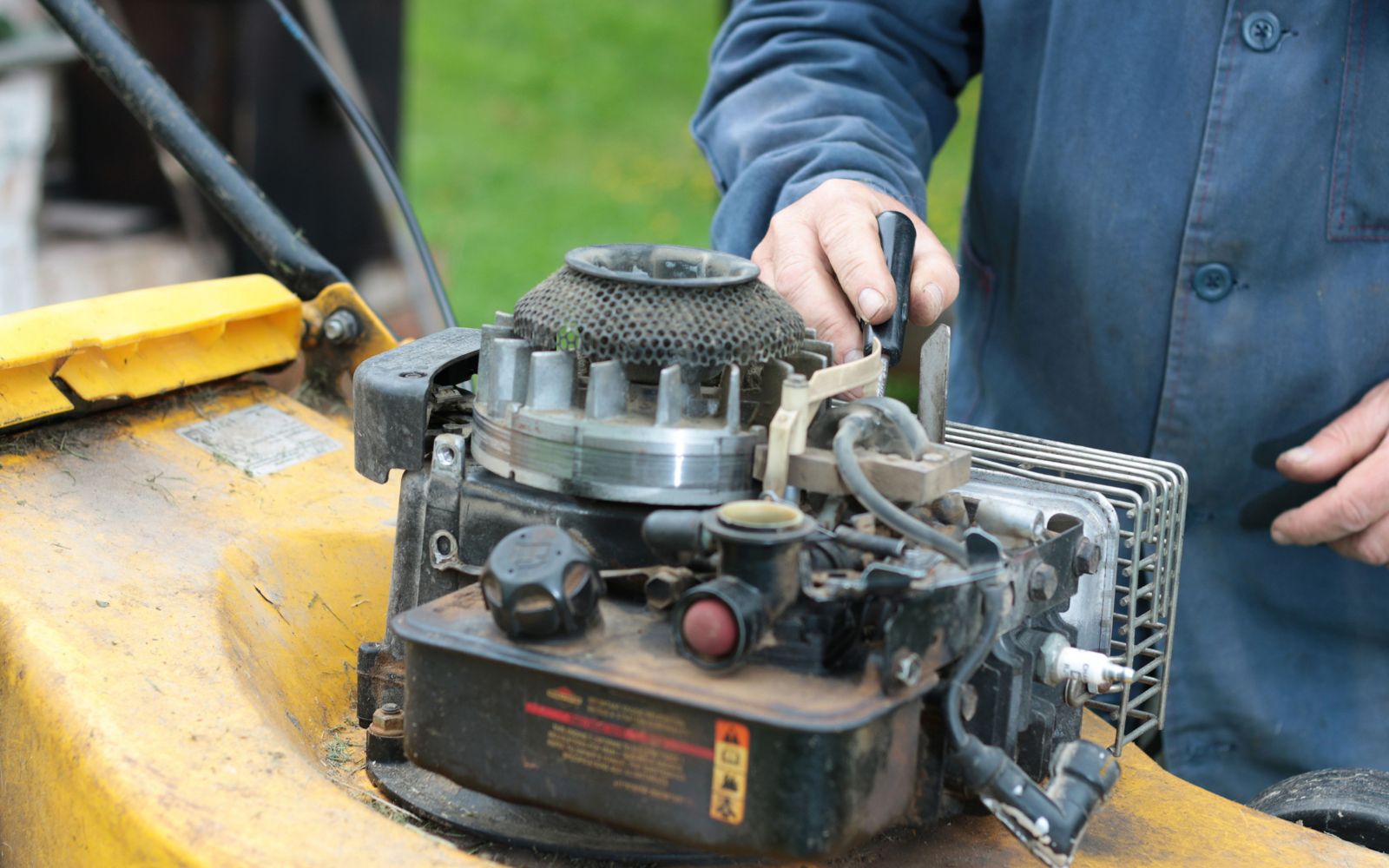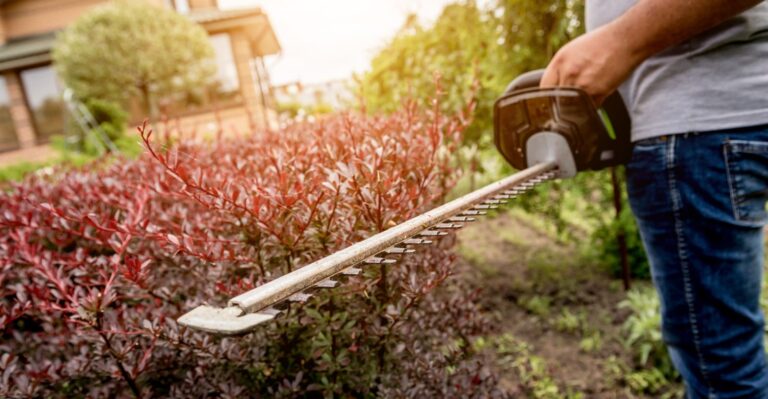Amazon has put together some great Home Gift Deals – save money and get your shopping done at the comfort of your home! Click here to see deals on Amazon
Do you have a lawn mower that starts then dies?
Well, you’re not the only one. It’s a pervasive problem that gasoline-based mower owners face. You don’t need to start dialing the serviceman yet, as there are some troubleshooting steps that you can take to fix it cheaply and quickly.
In this article, you’ll know the most common reasons for lawn engine stalling and the step-by-step process to isolate the problem and fix it yourself. Here is the most common cause of a lawnmower to start and then die.
- Dirty or worn-out carburetor
- Worn out or broken spark plug
- Dirty and clogged filter
- Loose or faulty choke
- Moisture in the oil reservoir
- Blocked muffler
The above list isn’t exhaustive, but it’s a good start and covers over 80 percent of the mower’s starting and stalling problems.
Let’s get started.

Why does my lawnmower start but not stay running?
If you have a gas-powered lawnmower and it starts but turns off right away or after a few minutes, most of the time, you can quickly fix it yourself.
This saves you the money and the hassle of bringing your mower to a repair shop and waiting a couple of days while you get it fixed.
Below you’ll find several necessary troubleshooting steps that may fix over most common types of issues in the engine. You need access to a few essential tools such as a screwdriver and spare parts if required.
A carburetor is dirty or clogged
A faulty carburetor is the most common reason for a gas engine to start then stall. The primary function of a carburetor is to mix air and gas in the right proportion.
The air mix fuel then passes through the compression chamber, where the steady flow of gasoline burns under high pressure and moves the crankshaft to keep the engine running.
Sometimes the contaminated fuel or dirt gets inside, and the carburetor fuel bowl gets clogged. It causes the contaminated fuel to pass through the compressor where fuel doesn’t burn properly and the engine stalls.
Needless to say, the clogged and dirty carburetor doesn’t supply the proper gas flow to the engine that stalls it.
Here is how you can fix dirty or clogged mower carburetors and fuel filters.
There are several different products available in the market to clean dirty or clogged carburetor fuel bowls. My recommendation is to use a 3M Throttle Plate and Carb Cleaner.
It removes dirt and residue that affect the performance of the carburetor. The high-pressure nozzle allows deep cleaning and removes residue from the carburetor bowl for the smooth flow of gas.
It’s easy to use, and you can use it at any angle or even upside down. You can also buy the nylon cleaning brush that I find super useful in cleaning the carburetor. It allows you to clean small openings and hard-to-reach places.
Depending on your lawnmower model, you can unscrew the carburetor float bowl’s bottom part and clean it thoroughly. Keep screws at the clean spot, so it doesn’t get dirty; otherwise, it will be hard to screw it back on.
How do you clean a carburetor on a lawn mower without removing it?
For proper cleaning, it’s best to open the metal flap of the carburetor and give it a thorough cleaning. But if you don’t want to open the carburetor, I recommend using Berryman Chemtool Carburetor cleaner.
It’s a solvent that you add to the fuel, which quickly disperses moisture and other residues from the carburetor. This is the easiest and quick way to clean your carburetor without needing to open it.
The Berryman Chemtool should only be used in gasoline engines. If you need a cleaner for gas and diesel engine lawnmower, you can choose Seam Foam SF-16.
You can use an aerosol spray cleaner to clean it from outside and the fuel pipes without opening the carburetor. The high-pressure aerosol can help remove leaked engine oil and dirt outside the carburetor.
You can wipe it with a clean cloth and remove any dirt or grease from the engine. You will be very limited in cleaning this way as you will have to open it to clean it from inside.
Here is a short video on how to clean the 5-HP Briggs and Stratton Engine Carburetor.
Where do you spray carb cleaner on a lawn mower?
You need to spray the carb cleaner to the intake valve of the carburetor. Before you start spraying, make sure you’re in a clean area and there is no dust flying around. You don’t want the dirt or dust to get inside the exposed intake valve.
You have to start the engine before spraying and spray two or three times the carb cleaner while the engine runs.
Don’t rush it too much as it will stall the engine. You will see the engine slowing when you spray the carb cleaner. Wait for a few moments, and then respray a couple of times.
Spark Plug is broken or worn out
The spark plug ignites the fuel mixture in the engine chamber. A dirty or worn-out spark plug generates intermittent sparks that cause the lawnmower engine to either not start or die quickly. You can use a wire brush and cleaning solvent to remove the carbon deposits or dirt.
Most often, the carbon buildup on the tip makes it difficult to get a proper spark inside the ignition chamber. You can remove the spark plug and clean any carbon deposits or oil residues from the tip of the spark plug wire. Also, check for any worn-out signs or cracks.

How do I know if my lawnmower spark plug is bad?
You can remove the spark plug from the lawnmower and attach it to the inlet and try to crank the engine.
You should be able to see a tiny spark from the tip near the bent electrode and bottom pin. If you don’t see the flash, it means you need to replace it.
A bad spark plus reduces engine fuel efficiency. You will find that your lawnmower needs more fill-ups to do the job. This is because of a missing spark flash when the fuel is injected, and the unburned fuel produces white smoke.
Another sign of a bad spark plug is trouble with the engine start. Even if you can turn on the machine, the mower quickly dies whenever you throttle the engine.
This is because the worn-out spark plug has difficulty creating sufficient sparks to keep the engine running at a higher speed.
How long does a spark plug last in a lawn mower?
Spark plugs in a lawn mower last 12 to 24 months. Engine manufacturers have their replacement and maintenance schedules. You can refer to your lawn mower manual for more information.
You don’t need to replace the spark plug socket if you don’t have any problem starting your mower. You can check and clean it at the start of the season to ensure everything is clean inside and no dirt or residue is present.
The air filter is dirty or clogged
A clogged or dirty air filter obstructs the airflow to mix with the fuel. Poor airflow causes the lawnmower engine to die a few minutes after the start. Since the mower often catches dirt and debris from the yard, the filter quickly gets clogged that needs to be cleaned.
Air filters are made of sturdy porous material that can be cleaned with compressed air. If it’s too dirty, you can remove it and wash it in lukewarm water with dish soap. You can then dry it off with air or leave it outdoor for a while.
Most lawnmower manufacturers recommend cleaning the filter box once a year. You may also buy a new one if there is any tear or it has worn out.
You shouldn’t run the engine without an air filter. A lawnmower without a filter will be sucking dirt and debris directly inside the machine.
It may cause damage to cylinder walls, pistons, and valves. You may have to replace the lawnmower in case of severe damage to the engine.
Choke is loose or faulty
A choke in the lawnmower helps with cold start the engine. When you hold on to the choke, it increases the fuel that helps start a cold engine.
When the engine has warmed up a bit, you can turn off the choke to let the engine run on a regular operating fuel mixture.
A faulty or loose choke makes it challenging to start the engine. An improper choke hinders the engine’s proper fuel mixture supply.
Choke is held with a screw and spring in the lawnmower. If you get the engine stalled while running, check the choke to make sure it’s not left on.
If you find the choke to be loose or the spring not pulling back to its closed position, you need to either tighten any loose screw or replace the spring.
Why does my mower only run when I push the primer?
If the mower only runs when you push the primer, it means the engine isn’t getting proper fuel. There may be several reasons for it. But here are the three most common reasons:
Air leak around fuel intake or in carburetor: Air leak causes too much air concentration in the fuel and less fuel for combustion.
Check for any cracks in the fuel line pipe or loose carburetor mounting. You should also inspect the carburetor for any tearing of the gasket seal and replace it if it has cracked.
Fuel Contamination: A dirty carburetor causes the fuel to be contaminated that causes improper combustion or not enough fuel for the combustion. You should clean the carburetor and drain the fuel tank and fill it with clean oil.
Improper Fuel type: Wrong fuel type with primer concentration may cause irregular combustion.
Check your manufacturer-recommended fuel type. Most mowers require regular gasoline grade.
Moisture in the fuel line and in the gas tank
Moisture in the fuel line and in the gas tank makes it difficult for the mower engine to start or make it stall on the throttle. Sometimes too much moisture may cause the engine to sputter.
If you see water droplets in the fuel line, check the pipe to ensure it fitted correctly and is appropriately sealed.
You should also inspect the plastic fuel pipe for any cracks or holes. You have to replace any loose or worn-out fuel pipe.
For a small amount of moisture in the gas, you can add additives to the gas. Iso Heet is a good additive that removes water dissolved in gasoline or diesel fuel. You can order it directly from Amazon.
For any considerable amount of water in the gas, the best option is to empty the tank and let it dry and fill it will cleaner fuel. You should also keep the engine in optimal running condition by filling it with the right amount of lawnmower engine oil.
Old, stale, or wrong type gasoline
It goes without saying that lawnmower (gasoline types) needs fuel to operate. You should always empty the fuel from the lawnmower before long-term storage.
Any dirty gas left inside it gradually evaporates while leaving residue inside the engine.
You should remove old and bad gas leftover fuel in the mower and refill it with fresh gasoline at the start of the season. You can also add a fuel stabilizer to prevent any clogging due to older fuel residue inside the engine.
STA-Bil 360 Protection is a great additive that prevents corrosion, ethanol damage, and cleans the fuel system.
Blocked Muffler
A blocked muffler is another common reason to cause the engine to stop within a few minutes or not let start the engine.
The primary purpose of a muffler is to suppress the loud exhaust noise from the engine. A dirty or blocked damper causes the engine to stall or increase the noise. You should visually inspect the muffler to ensure no rock or dirt blocks it or has any excess oil leaking.
For cleaning, you may have to remove the muffler. You should turn off the engine and let it cool for a few minutes before touching the muffler as it will be very hot. Put on safety gloves and eyeglass and turn the damper in a counterclockwise direction to remove it from the engine.
If you have difficulty removing it, you may have to check the mower manual. Once removed, you can physically remove any obstruction and spray carburetor cleaner solution in it.
You can let the cleaner settle for a few minutes and shake the rear-facing muffler downward to remove any dirt or debris.
You can then let it dry and put it back on the engine. Ensure it’s closely fitted and there is no exhaust coming out from the joint.

Why does my lawn mower sound like it’s going to stall?
This may be a sign that the mower isn’t getting sufficient fuel into the combustion chamber. The most common reason may be the faulty or dirty carburetor, a problem in the fuel system, or air leaks in the fuel pump.
You should also check if the choke is closed and there is no damage to it. Check the fuel level to ensure you have sufficient fuel inside the tank.
Look for any oil leakage on the ground or around the engine. This may be a sign of a faulty or broken gasket that may need to be replaced.
When is the time to call a professional to fix the lawnmower?
Most often, following the above troubleshooting steps should resolve any issue with a mower that starts then dies. But if it still doesn’t start or the problem persists, you may have to bring it to the service center.
If your mower is still under warranty, you should contact the manufacturer to locate the designated service center in your area. You can check with a local engine repair shop to get it fixed for of warranty period mower. There are also some lawn mower brands that you should avoid.
Here is the handy troubleshooting checklist for your reference.

Over to you
Having a faulty lawn mower is a great inconvenience. The mower isn’t a cheap gardening tool, and you should get it repaired instead of buying a new one.
Whenever you start having a problem with your lawnmower engine starting or stalling, you should start by following the above methods to troubleshoots.
Most times, it’s a simple and easy fix that you can do yourself without needing an overcomplicated repair job. You should also follow the manufacturer recommended maintenance schedule to keep it running at optimal condition.
Don’t forget to share this post







